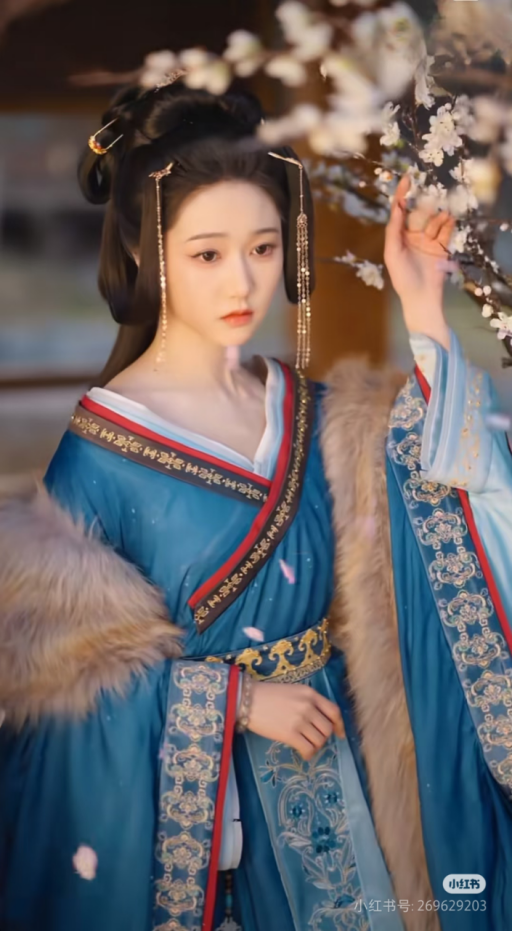Tang Dynasty Clothing mirrors the styles seen in movies and TV shows
Characterized by their thin, translucent, and revealing designs, often featuring semi-covered, bare-shouldered looks, these garments epitomize the openness of the Tang era. In films such as “The Tale of Deer and the Cat,” “Detective Dee,” and “The Longest Day in Chang’an,” the female characters are depicted in off-shoulder and backless outfits, truly embodying the liberal nature of Tang women’s clothing.
During the peak of Chinese ancient culture under the Tang dynasty, the overall style of Tang Clothing was open, extroverted, and inclusive. Both men’s and women’s clothing inherited traditional Hanfu while incorporating elements from minority Clothings, leading to the emergence of novel styles like the round-collar robe, high-waist cheongsam, and cross-over tunic and skirt. Compared to other dynastic costumes, Tang Clothing remains more popular today, largely due to its modern aesthetic and wearing style.

What Are Some Classic Tang Dynasty Styles?
The most remarkable aspect of Tang Clothing extends not only to women’s wear but also to men’s fashion. The round-collar robe, a staple of daily wear for Tang males, comes in two varieties: those with side slits and those without. The main difference lies in whether the sides are split or not, with the latter having an additional fabric panel around the lower knee. As official Clothing, the round-collar robe with side slits is worn daily. Known for its smooth straight round collar design and symmetrical front and back panels, it was frequently adopted by Tang women for a dashing and handsome look.

Unlike other dynasties, Tang women’s Hanfu was richer in color and material, breaking free from traditional constraints. The low necklines boldly exposed the neck and collarbone, creating a unique cultural phenomenon. The high-waist cheongsam, another classic among Tang women’s Clothing, consisted of a top and a skirt. With options for either overlapping or cross-over collar designs, its most striking feature was the high waistline, sometimes even reaching up to the armpits, secured with silk ribbons. This distinctive skirt design persisted from the Tang into the Song dynasty.

Materials and Craftsmanship of Tang
The great achievements of Tang Clothing were closely tied to its materials and craftsmanship. Primarily made from silk, satin, and other luxurious fabrics that were lightweight, soft, and lustrous, these garments were further enhanced by embroidery, brocade, and dyeing techniques. This is why Tang Hanfu appeared so magnificent and resplendent.
The development of Hanfu reached new heights during the Tang dynasty. Known for its grand and unrestrained style, Tang Clothing emphasized the harmony of colors and patterns, seeking outrageous and exquisite effects. Both authentic and modified modern interpretations of Tang-style Hanfu continue to be passed down. Additionally, modern Tang Clothing does not carry over elements from the Tang dynasty but is based on the Qing dynasty’s Magua jacket, incorporating Western tailoring techniques to create contemporary clothing.







